If you’re just learning to cook, or you’re on a budget, it’s a good idea to make your pantry staples a set of ingredients that you can mix and match into multiple dishes. They don’t have to be a huge part of each meal, but they can offer you enough flexibility that you’ll never be short on meal ideas. Here are a few with those properties.
Basic Starches: Rice, Potatoes and Noodles
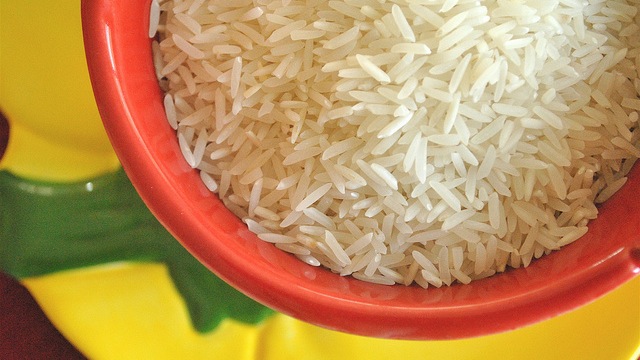
Starches like rice, potatoes and pasta can be both the base of or the filler in a number of meals, but you don’t have to accept them at face value. Here are a few of our favourite base starches you can mix and match into unusual or interesting ways:
Rice
Ah rice, the most consumed food on the planet. If you think the only thing you can do with rice is toss it in a pot or rice cooker and eat it on the side of your meal, you’re dead wrong. Rice is extremely versatile, but you need to understand the different types of rice and what makes them special.
You’ll usually see short-grain, medium-grain and long-grain rice, along with “wild rice” in the supermarket:
- Short-grain rice, as the name implies, has a visually smaller, almost round grain. It’s often used in more glutinous preparations, such as rice puddings or rice moulds, because it tends to stick together and become chewier when cooked through.
- Medium-grain rice is probably the most common grain size on the market. You’ll find lots of different types of rice in this grain (more on this later). Because it’s soft and sticky without being firm like long-grain or mouldable like short-grain, it’s also the most versatile. If you’re buying for the most possible applications, this is what we recommend.
- Long-grain rice cooks up firm. It stays separate when cooked, and it doesn’t stick or clump together, so it retains a very grainy, individual texture when eaten. You should use long-grain rice only in dishes that call for separate grains — pilafs, for example.
- “Wild” rice isn’t actually rice at all. It’s a grass seed that’s high in protein, cooks up like long-grain rice and has a nutty flavour. It takes a long time to cook, and while it’s delicious, it’s not very versatile and almost always a side dish.
- “White” vs “Brown” rice are phrases used to describe how much the rice has been milled and polished. Brown rice has the hull removed, but retains the rice bran layer and the germ, which give it a nuttier flavour and firmer texture, along with some nutritional benefits, because the bran layer contains most of the vitamins and minerals, and it has a lower glycemic index. It also takes longer to cook. White rice has those layers removed and has been polished, and it’s more widely used (and more flexible in recipes). Nutrition aside, most of the rice you’ll see is white rice, because it cooks faster and can be applied more widely. Keep that in mind when shopping.
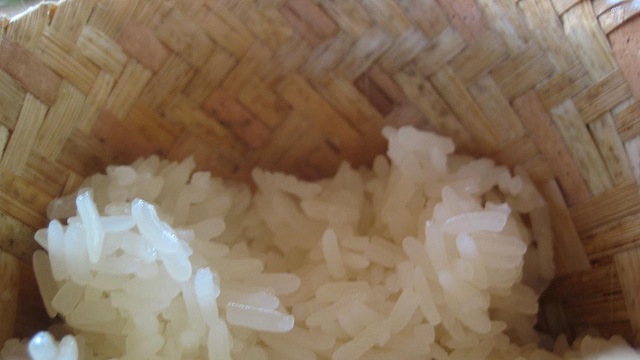
By and large we’d suggest you get a nice medium-grain rice — it’s the most universally applicable. Even so, don’t be fooled into thinking there’s nothing else to rice than the length of its grain. Skip the Uncle Ben’s and the instant rice, and look for some of these words on your store shelves:
Aromatic Rice includes most types of rice that have a fragrant or nutty smell associated with them. Jasmine rice, Basmati rice, Wehani rice and so on. Most of these types are medium-grain to long-grain. Personally, I find Jasmine and Basmati rice to be incredibly versatile and useful in different cooking methods. Give them a try. Also, look for glutinous rice if you’re looking for that sticky, clumpy feel. Sticky rice or sweet rice fall into this category, as does “waxy rice,“ and they’re named like this not because they’re particularly high in gluten but just because of the consistency they take when cooked. For example, risotto, the creamy italian dish that comes in so many flavours and styles, is made with Arborio or Carnaroli rice — both of which are glutinous. Look for those too.
You’ll see other words used to describe rice types, like “japonica” and “indica“, which really refer to the original cultivation point for the rice. If all of this sounds complicated, it is! There are over 40,000 varieties of rice, and that doesn’t even include things like couscous (actually a dish, made with Semolina and not rice at all), that people often confuse with rice. For more detail on the various types of rice, check out this list of varieties, and this glossary about the different types of rice. Both go into far greater detail than we have time for.
Long story short, take some of the names we’ve mentioned here into the supermarket with you. Look for medium-grain rice. Aromatics like Jasmine and Basmati tend to add a little fanciness to standard rice dishes. Brown rice is healthier, but it will take longer to cook and is less flexible than white rice. Glutinous rices, like “sweet”, “sticky” and “sushi” rice, clump together really nicely and are also flexible. With so many options, there’s no reason to buy two-minute rice ever again.
Potatoes
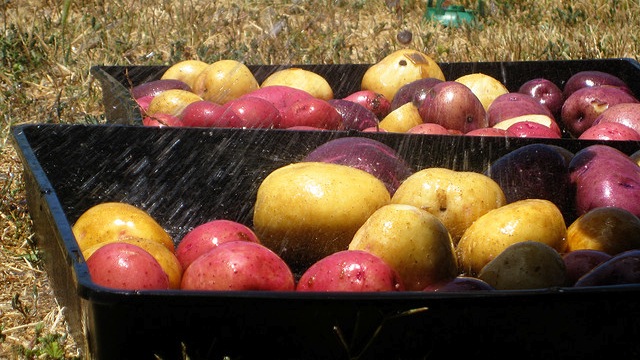
Potatoes can be just as complicated as rice, but they’re a little easier to boil down (see what I did there?). They’re just as flexible — you can just boil them up and eat them whole, smash them to your preferred texture and eat them mashed, mash and cook them for pancakes, chop them up and use them as an ingredient in something else. The preparation methods for potatoes are nearly endless, especially when you consider how many types there are:
- Russet potatoes are your traditional baking potato. They’re best cooked whole, baked, and come up fluffy and light on the inside with a firm skin over them. Their fluffiness makes them useful for mashed potatoes too. If you had to buy an all-purpose potato, the Russet is a solid choice.
- Red potatoes are usually smaller and have red skin. They’re waxy potatoes, well served by roasting or mashing, or chopped up for soups or stews. Their waxy nature means they tend to hold their form when cooked, even in liquids. They’re usually my go-to potato when I don’t need the fluffiness of a russet.
- White potatoes are waxy and hold their shape well like red potatoes. They’re great for potato salads or for grilling, and they can be used in the same types of dishes red potatoes can. They’re a bit starchier than reds though, so they’ll turn up a little fluffier in some preparations.
- Yellow potatoes and Yukon Gold potatoes tend to fall apart when cooked, especially in liquid. If you have to boil them, keep a close eye on them and take them out, drain them, and then mash them or press them flat and use them for pancakes. Otherwise, grill them, bake them or roast them.
- Purple/Blue potatoes are easily identifiable by colour, but they also have a unique, nutty flavour you may not be familiar with. They can be pricey and definitely aren’t the all-purpose potatoes that Russets, reds, or even yellow potatoes are, but they’re a great addition to salads. They’re not baking or mashing potatoes though, not really.
You’ll also see “petites” or “fingerling” potatoes, which usually correspond to one of the above types, just in smaller sizes and can be used in similar ways. Petites are often specifically thin and are best roasted or fried. Fingerlings can be pan fried, roasted or mashed. For even more potato types and details on these, check out this guide from The Cook’s Thesaurus.
Pay attention to the starch or water content in potatoes, which will determine how they’re best cooked. The video above from America’s Test Kitchen explains nicely what you should watch out for when you pick up potatoes at the supermarket. You can do almost anything with potatoes, but knowing which type you have means you can pick the perfect applications for it.
Ramen Noodles
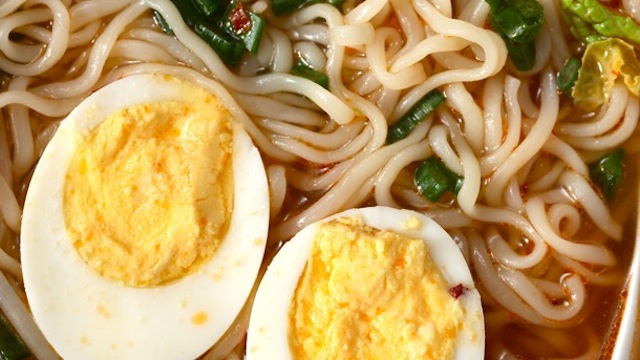
Ramen noodles may seem like cheap students’ food — and, let’s be honest, they are — but that doesn’t mean they’re not versatile on their own. They’re not exactly the most nutritious food, but when you ditch the flavour packet that comes with them and cook them yourself properly, they can be a real meal, not just a late-night snack or what you have for lunch when nothing else is around.
Instead of getting into the differences between Asian noodles, we’ll point you to this list of 30 different ways to hack your ramen noodles, courtesy of our friends at Serious Eats. If you’ve never bothered to take those packet noodles, cook them in your own broth and add a little meat to the mix, you’ll want to. They even suggest making a cast iron skillet shepherd’s pie with ramen noodles on top instead of potatoes.
Similarly, check out this guide to ramen dishes that aren’t soup from HuffPo Taste. They suggest creative preparations like ramen salad, a kimchi-ramen grilled cheese, ramen trail mix, and even a ramen omelet that’s actually surprisingly good. They may be cheap and somewhat empty calories, but they’re some of the most versatile things you can put in your pantry if you have a little imagination.
Fruits and Veggies: Bananas and Peppers
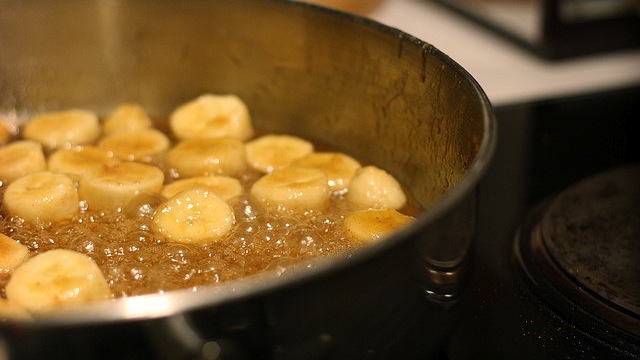
OK, we’ve had our starches. It’s time to move on to the things that are actually good for you. Here are a few health-friendly fruits and veggies you can mix and match into interesting and creative meals that beat just cutting them up and cooking them:
Bananas
You might think that bananas are pretty plain and straightforward, and they can be if the only way you’ve ever eaten them is peeled and straight, or sliced on a bowl of cereal. You’ve probably also had them sliced on toast, or a peanut butter and banana sandwich, but swap out the peanut butter for Nutella and you have a completely different experience. If that’s too mainstream for you, keep them around to toss into fruit smoothies — bananas can offer added thickness and sweetness to a smoothie without adding too much of its own characteristic banana-ness to the mix. They’re even useful to thicken up veggie smoothies.
Similarly, while banana bread and banana pudding tend to bring a lot of the banana’s own flavour to the party, they’re definitely transformative ways to make use of bananas without just eating them straight up. If you don’t believe us, check out Endless Simmer’s list of over 100 recipes and preparations that involve a banana. Some are sweet, like the Thai candied bananas and some are savory, like the roasted squash soup with maple glazed bananas. If you’re not feeling that fancy, just brush them with rum and honey and toss them on the grill.
Capsicum and Peppers
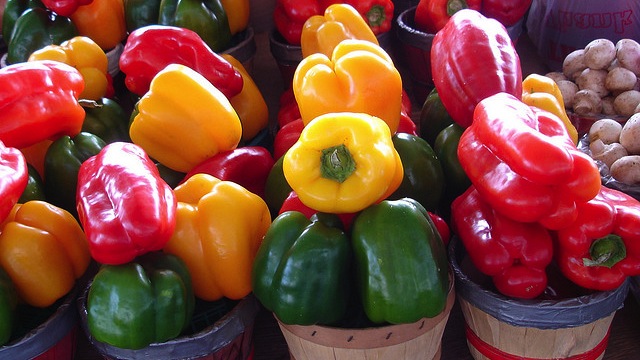
The term “pepper” captures a remarkably wide class of foods (they’re botanically fruits, but often referred to as vegetables in culinary circles). For our purposes, we’ll be talking about common peppers like bell peppers (capsicums), and some chilli pepper varieties, like poblanos and jalapeños that are more versatile than their exceptionally spicy cousins. You may think a pepper is a pepper, but the number of methods that peppers can be prepared and served make them worth keeping in your fridge for a rainy day.
First, a point of order: green, yellow and red capsicums are all the same, just harvested at different times. Every capsicum starts off green, and, when harvested at that point, they’re crisp, slightly bitter and don’t have the trademark sweetness that develops if you leave them to mature. With a little time, green capsicums eventually turn orange and yellow, and develop more fruitiness and sweetness. If you leave them even longer, they’ll go full red. Red capsicums are the sweetest and fruitiest, and they have almost none of the bitterness of green peppers.
For that reason, even people who can’t stomach green capsicums often fall in love with red capsicums, especially when they’re roasted to bring out even more sweetness. Roasting capsicums all but creates an entirely new vegetable, with new uses and properties, and you can do it at home.
These transformations — all from the same plant — make peppers extremely flexible, even if you sauté some green ones with some red ones and serve them together. Preparation-wise, capsicums can be served raw as a snack, sliced up over salad, used in stir fries, sautéed with sausages or other meats, chopped up fine and added to eggs, salad, rice or almost anything else you want to add that crispness or sweetness to. You could serve them whole and stuffed with just about anything you enjoy, or pickle them to preserve them for the long haul.
Chilli peppers, on the other hand, like poblanos and jalapeños, are just as flexible. While they don’t change colour in the same fashion, they can just as easily be stuffed, or sliced up and used to add some spiciness and heat to another dish. The sheer fact that all of these pepper varieties can be a main dish or a side item or an ingredient in something else makes them useful far beyond a humble crudite platter.
Extras: Plenty of Spices and Flavour Enhancers
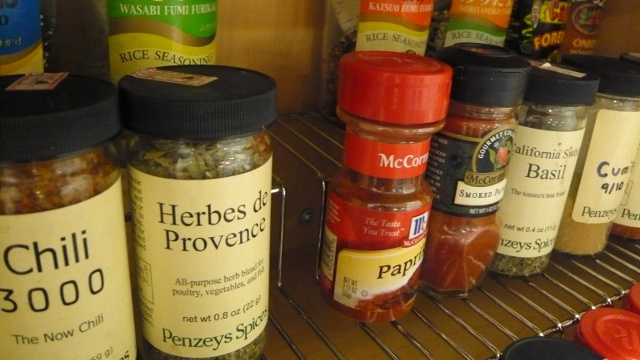
Finally, if you really want to be able to do incredible things with these — and any other flexible food you love — you’ll need some ways to amp up and tweak the flavours so they don’t always taste like what you’ve had before. We’ve talked about how to make your own spice mixes and putting together “spice kits” of your favourite spices, but a well-stocked spice cabinet is the key to using the same foods in drastically different ways.
While you’re at it, keep a few flavour enhancers on hand to add a spicy or savoury punch to your meals. When we talked about improving your home cooking with science, we mentioned keeping “umami bombs” like soy sauce, anchovy or marmite on hand for a quick savoury boost when your dishes need them. You could use the chilli peppers we mentioned for a spicy boost, but a little cayenne pepper or spicy sesame oil in the spice cabinet can help too. If you keep one or two ways to inject sweet, spicy, savory, or even bitter into a dish up your sleeve, you can do almost anything — even with takeout or otherwise boring foods.
Pictures: cookbookman17, Thomas Wanhoff, Melodie Turori, Serious Eats, Ginny, chascar
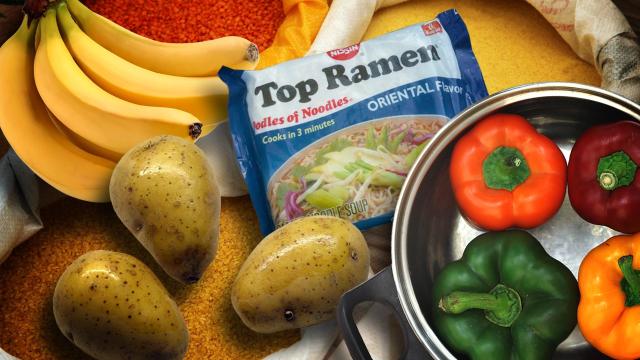
Comments
2 responses to “Five Foods You Can Do Almost Anything With”
Have every one of those items on hand – always. I find I must always have cheese and carrots and bread on hand too – as all of these have a lot of uses.
Nice article, I can attest to the awesomeness of medium grain rice, capsicum and augmented noodles.
However it bothers me using the term “pepper” for capsicum or chilli. Why do people do that? Black pepper and Sichuan pepper couldn’t be more different than capsicums, totally different plant orders… Thanks to Columbus I guess…. :/